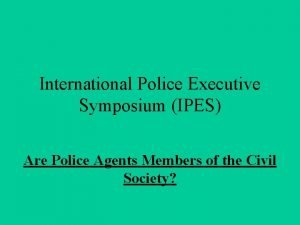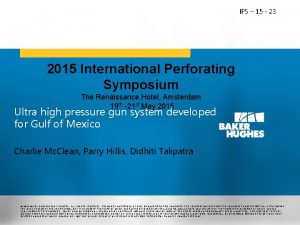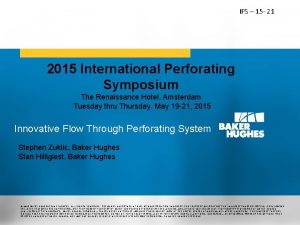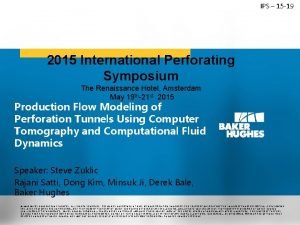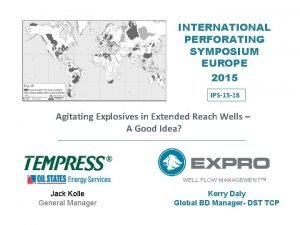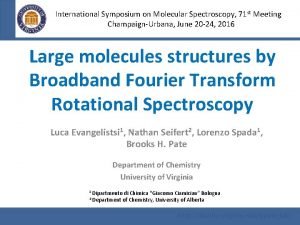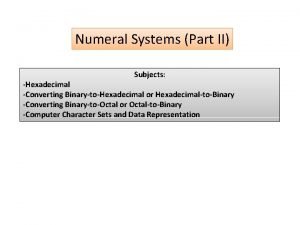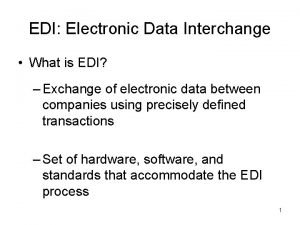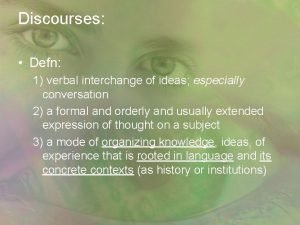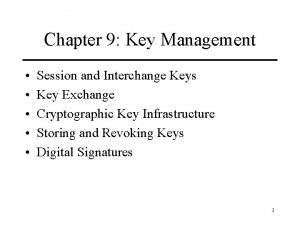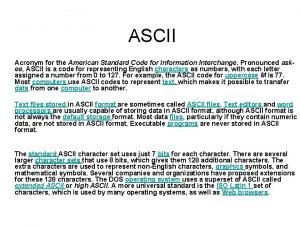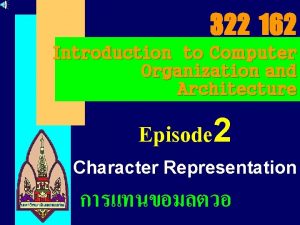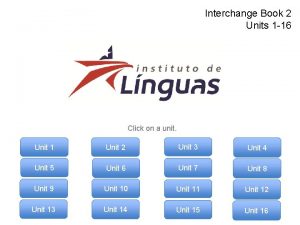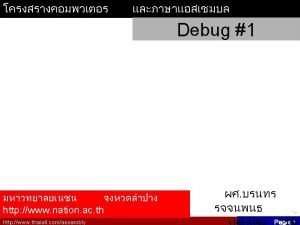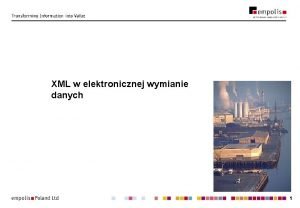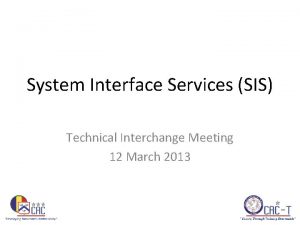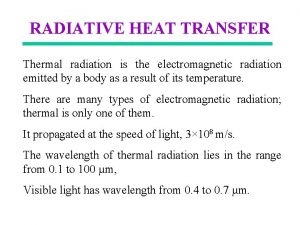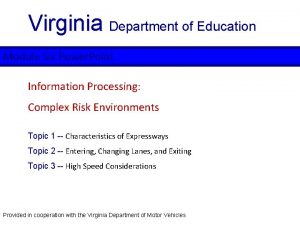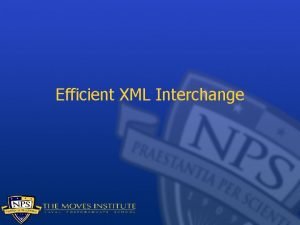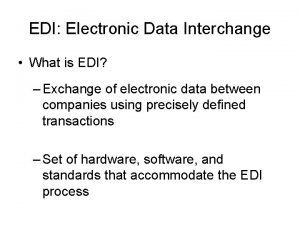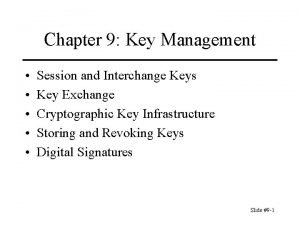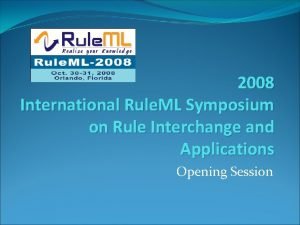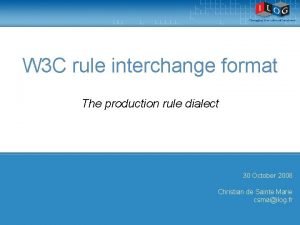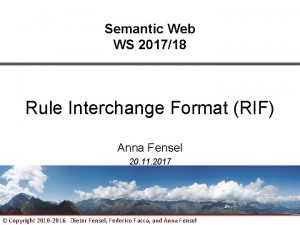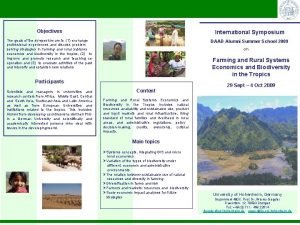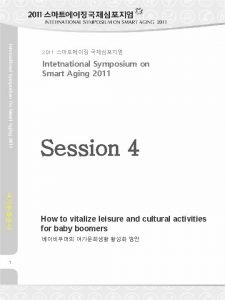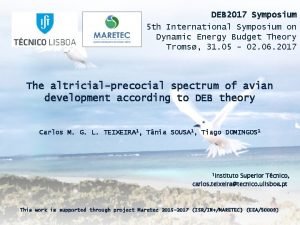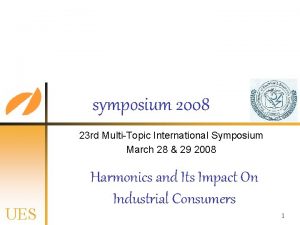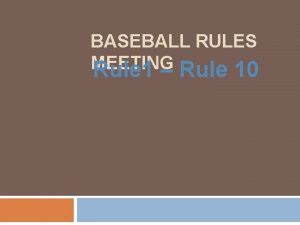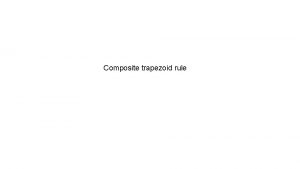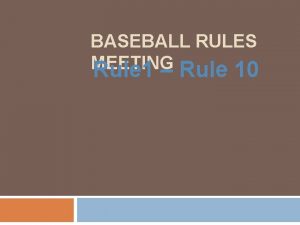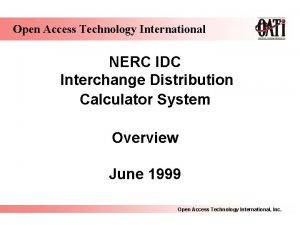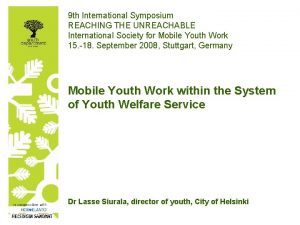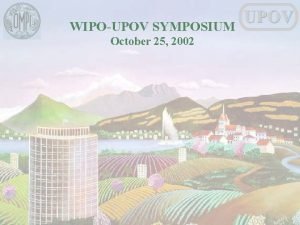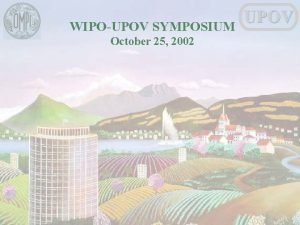The International Rule ML Symposium on Rule Interchange











![Non-Monotonic MCS n Non-monotonic rule-based MCS framework [Roelofsen & Serafini, IJCAI 2005] q supports Non-Monotonic MCS n Non-monotonic rule-based MCS framework [Roelofsen & Serafini, IJCAI 2005] q supports](https://slidetodoc.com/presentation_image_h2/11b31fa84a4fa2d1b5d051fe54f5895f/image-12.jpg)


















- Slides: 30

The International Rule. ML Symposium on Rule Interchange and Applications Local and Distributed Defeasible Reasoning in Multi-Context Systems Antonis Bikakis, Grigoris Antoniou Institute of Computer Science, FO. R. T. H. , Greece October, 2008

Overview n Motivation - Background q q q n n Context and Contextual Reasoning Multi-Context Systems Reasoning in MCS Methodology q Representation Model q P 2 P_DRdl Algorithm q Properties Conclusion - Discussion The International Rule. ML Symposium on Rule Interchange and Applications 2

Context in Artificial Intelligence n Context and contextual reasoning q q were first introduced in AI by Mc. Carthy as an approach for the problem of generality have already been used in various distributed reasoning applications n q e. g. CYC, Semantic Web (contextualized ontologies), multi-agent systems, commonsense reasoning, reasoning with viewpoints, … are expected to play a significant role in the development of the next generation AI applications n e. g. Ambient Intelligence The International Rule. ML Symposium on Rule Interchange and Applications 3

Formalizations of context n Dimensions of contextual reasoning q q q n Partiality Approximation Perspective Main Formalizations q q Propositional Logic of Context (PLC) Multi-Context Systems (MCS) n q associated with the Local Model Semantics MCS has been argued to be n n most adequate wrt. to the three dimensions of contextual reasoning technically more general than PLC The International Rule. ML Symposium on Rule Interchange and Applications 4

Multi-Context Systems: The magic box example n None of the observers can make out the depth of the box Mr. 2 Mr. 1 The International Rule. ML Symposium on Rule Interchange and Applications 5

Multi-Context Systems: The magic box example n n central section None of the observers can make out the depth of the box Mr. 1’s beliefs may regard concepts that are meaningless for Mr. 2 and vice versa Mr. 2 Mr. 1 ? The International Rule. ML Symposium on Rule Interchange and Applications 6

Multi-Context Systems: The magic box example n n right section n None of the observers can make out the depth of the box Mr. 1’s beliefs may regard concepts that are meaningless for Mr. 2 and vice versa Mr. 1 and Mr. 2 may use common concepts but interpret them in different ways Mr. 2 Mr. 1 right section The International Rule. ML Symposium on Rule Interchange and Applications 7

Multi-Context Systems: The magic box example n n ball in the left section Mr. 2 n n None of the observers can make out the depth of the box Mr. 1’s beliefs may regard concepts that are meaningless for Mr. 2 and vice versa Mr. 1 and Mr. 2 may use common concepts but interpret them in different ways The observers may have partial access to each other’s beliefs about the box. Mr. 1 ball in the right section The International Rule. ML Symposium on Rule Interchange and Applications 8

Multi-Context Systems: Intuitions n n A context is a partial and approximate theory of the world from some individual’s perspective. Reasoning with multiple contexts is a combination of q q n local reasoning (reasoning with the local context only) distributed reasoning (reasoning that takes into account the relations between local contexts) No context can be fully translated into another – the relationship between different contexts can be described only to partial extend The International Rule. ML Symposium on Rule Interchange and Applications 9

Multi-Context Systems: Model n n n A context can be thought of as a a set of axioms and inference rules that model local context knowledge. Relations between local contexts are modeled as inference rules (known as mapping or bridge rules) with premises and consequences in different contexts, which enable information flow between related contexts. Different contexts are expected to use q q n different languages different inference systems Challenges q q Heterogeneity Inconsistencies that arise from the interaction of contexts through mappings The International Rule. ML Symposium on Rule Interchange and Applications 10

Global Inconsistency in MCS Context A k Context B n ¬k Context C Even if we assume that contexts A, B and C are locally consistent, their unification through the mappings of A, which import context knowledge from B and C may contain inconsistencies. The International Rule. ML Symposium on Rule Interchange and Applications 11
![NonMonotonic MCS n Nonmonotonic rulebased MCS framework Roelofsen Serafini IJCAI 2005 q supports Non-Monotonic MCS n Non-monotonic rule-based MCS framework [Roelofsen & Serafini, IJCAI 2005] q supports](https://slidetodoc.com/presentation_image_h2/11b31fa84a4fa2d1b5d051fe54f5895f/image-12.jpg)
Non-Monotonic MCS n Non-monotonic rule-based MCS framework [Roelofsen & Serafini, IJCAI 2005] q supports default negation in the mapping rules q handles missing context n Multi-context variant of Default Logic (Contextual Default Logic) [Brewka et al. , IJCAI 2007] q models bridge relations as default rules q handles missing context and ambiguous context q can be easily implemented due to the well-studied relation between Default Logic and Logic Programming n But, Contextual Default Logic q q q does not include the notion of preference or priority between contexts does not actually resolve the conflicts may impose a too heavy computational overhead The International Rule. ML Symposium on Rule Interchange and Applications 12

Overview of our approach n Extend the MCS model with q q n defeasible local theories defeasible mapping rules Resolve q q local conflicts using the rule priority relation of Defeasible Logic global conflicts using n the rule priority relation n an additional preference relation on the set of contexts The International Rule. ML Symposium on Rule Interchange and Applications 13

Representation Model n A MCS P is a collection of local rule theories Pi P = {Pi}, i=1, 2, …, n n n Each context has a proper distinct vocabulary Vi and a unique identifier i. Each local theory is a set of rules that contain only local literals q Strict local rules express sound – definite knowledge ril : ai 1 , ai 2 , …, ain-1→ ain q q Local rules with empty body express local factual knowledge Defeasible local rules express uncertain local knowledge rid : bi 1 , bi 2 , …, bin-1 bin The International Rule. ML Symposium on Rule Interchange and Applications 14

Representation Model n Each context also defines mappings that associate literals from its own vocabulary (local literals) with literals from the vocabulary of other contexts (foreign literals) q Mappings are also modeled as defeasible rules rim : ai 1 , aj 2 , …, akn-1 aln n Each context defines an acyclic priority relation on the set of its local and mapping rules ri > rj n Each context Pi defines a preference relation Ti on the set of contexts, which expresses the trust that Pi has in the other contexts Ti= [Pk , Pl , …, Pn] q q Pk is preferred to Pl by Pi, if Pk precedes Pl in Ti Contexts that are not included in Ti are equally preferred by Pi, but less preferred than those that are part of the list The International Rule. ML Symposium on Rule Interchange and Applications 15

Distributed Query Evaluation Problem Description q Given a MCS P and a query about a literal xi issued to Pi, find the truth value of xi considering Pi’s local theory, its mappings and the other context theories. The International Rule. ML Symposium on Rule Interchange and Applications 16

Local & Global Inconsistency P 2 P 1 r 11: a 1 -> x 1 r 12: a 2 => a 1 r 13: a 3, a 4 => ¬a 1 n P 4 r 31: -> a 3 r 41: -> a 4 a 2 a 2 b 2 2 ¬a b 2 Local conflicts arise as a result of local competing rules (r 23, r 24) q n P 3 c 2 -> r 21: -> b 2 -> r 22: -> c 2 r 23: b 2 => b 25 => r 24 23: c r 24 624=> 23: > br For conflict resolution we use the rule priority relation Global conflicts arise are caused by mappings (r 12, r 13) q For conflict resolution we use both rule priority and context preference relations The International Rule. ML Symposium on Rule Interchange and Applications 17

P 2 P_DRdl Algorithm n Step 1 q n Determine if xi, or its negation ¬xi are consequences of Pi's local strict rules Step 2 q q q Collect Pi’s local and mapping rules that support xi. Check which of these rules are applicable. For each literal in the body of a supportive rule, issue a similar query (recursive call of the algorithm) to compute its truth value. To avoid cycles, before each new call, check if the same query has been issued before during the same algorithm call. For each applicable rule ri, build its supportive set SSri. This derives from the union of the set of the foreign literals that are contained in the body of ri with the Supportive Sets of the local literals that belong in the body of the same Build the supportive set of xi , SSxi. This will be equal to the strongest SSri The International Rule. ML Symposium on Rule Interchange and Applications 18

P 2 P_DRdl Algorithm n n Step 3 q Collect Pi’s local and mapping rules that contradict xi. q Build the conflicting set of xi , CSxi. This will be equal to the supportive set of ¬xi. Step 4 q q n If for each applicable rule that contradicts the queried literal , there is at least one applicable rule that supports the same literal, which is either superior (according to the rule priority relation) or non-inferior but stronger (according to the context preference relation) -> return a positive truth value In any other case return a negative one Comparing the strength of two Supportive Sets q A literal ak is considered stronger than bl from Pi 's viewpoint if Pk precedes Pl in Ti. The strength of a set of literals is determined by the weakest literal in this set. The International Rule. ML Symposium on Rule Interchange and Applications 19

P 2 P_DRdl - Demonstration P 2 P 1 r 11: a 1 -> x 1 r 12: a 2 => a 1 r 13: a 3, a 4 => ¬a 1 P 3 P 4 r 31: -> a 3 r 41: -> a 4 r 21: -> b 2 r 22: -> c 2 r 23: b 2 => a 2 r 24: c 2 => ¬a 2 r 23 > r 24 A query about x 1 is issued to P 1 n Neither x 1 nor ¬x 1 derive from the local theory of P 1 The International Rule. ML Symposium on Rule Interchange and Applications 20

P 2 P_DRdl - Demonstration P 2 a 2? P 1 r 11: a 1 -> x 1 r 12: a 2 => a 1 r 13: a 3, a 4 => ¬a 1 n P 3 P 4 r 31: -> a 3 r 41: -> a 4 r 21: -> b 2 r 22: -> c 2 r 23: b 2 => a 2 r 24: c 2 => ¬a 2 r 23 > r 24 The algorithm successively calls rules r 11 and r 12 , and issues a query about a 2 The International Rule. ML Symposium on Rule Interchange and Applications 21

P 2 P_DRdl - Demonstration P 2 a 2? P 1 r 11: a 1 -> x 1 r 12: a 2 => a 1 r 13: a 3, a 4 => ¬a 1 n P 3 P 4 r 31: -> a 3 r 41: -> a 4 Ansa 2=Yes r 21: -> b 2 r 22: -> c 2 r 23: b 2 => a 2 r 24: c 2 => ¬a 2 r 23 > r 24 The algorithm computes a positive truth value for a 2, based on the local defeasible theory of P 2 and returns it to P 1. The International Rule. ML Symposium on Rule Interchange and Applications 22

P 2 P_DRdl - Demonstration P 2 P 1 r 11: a 1 -> x 1 SSr 12={a 2} n r 12: a 2 => a 1 r 13: a 3, a 4 => ¬a 1 P 3 P 4 r 31: -> a 3 r 41: -> a 4 r 21: -> b 2 r 22: -> c 2 r 23: b 2 => a 2 r 24: c 2 => ¬a 2 r 23 > r 24 The algorithm computes SSr 12 = {a 2} The International Rule. ML Symposium on Rule Interchange and Applications 23

P 2 P_DRdl - Demonstration P 2 P 1 r 21: -> b 2 r 22: -> c 2 r 23: b 2 => a 2 r 24: c 2 => ¬a 2 r 23 > r 24 r 11: a 1 -> x 1 SSr 12={a 2} SSr 13={a 3, a 4} r 12: a 2 => a 1 r 13: a 3, a 4 => ¬a 1 Ansa 3=Yes n a 3? a 4? Ansa 4=Yes P 3 P 4 r 31: -> a 3 r 41: -> a 4 In a similar way, it computes SSr 13 = {a 3, a 4} The International Rule. ML Symposium on Rule Interchange and Applications 24

P 2 P_DRdl - Demonstration P 2 P 1 T 1=[P 4, P 2, P 3] r 11: a 1 -> x 1 SSr 12={a 2} SS Ans r 13={a 3, a 4} a 1=Yes r 12: a 2 => a 1 r 13: a 3, a 4 => ¬a 1 r 21: -> b 2 r 22: -> c 2 r 23: b 2 => a 2 r 24: c 2 => ¬a 2 r 23 > r 24 Ansx 1=Yes n P 3 P 4 r 31: -> a 3 r 41: -> a 4 Using T 1= [P 4, P 2, P 3] the algorithm determines that SSr 12 is stronger than SSr 13 and returns a positive answer for a 1, and eventually for x 1 The International Rule. ML Symposium on Rule Interchange and Applications 25

P 2 P_DRdl Properties n Termination q q n The algorithm is guaranteed to terminate returning either a positive or a negative answer for the queried literal Holds due to cycle detection Number of Messages q q The total number of messages exchanged between contexts for the computation of a single query is in the worst case O(nlxn 2) Worst Case n q all contexts have defined mappings that involve literals from all other contexts and the evaluation of the query requires checking the mapping rules of all contexts This is a consequence of two states that we retain for each context, which keep track of the incoming and outgoing queries of the context The International Rule. ML Symposium on Rule Interchange and Applications 26

P 2 P_DRdl Properties n Computational Complexity q O(n 2 x nl 2 x nr + n x nl x nr 2) n n Worst Case: all contexts have defined mappings that involve literals from all other contexts and the evaluation of the query requires checking the mapping rules of all contexts Equivalent Defeasible Theory q q q There is a standard process for unifying the distributed theories in an equivalent global defeasible theory, which produces the same results with the distributed theories under the proof theory of Defeasible Logic. Assumption: acyclic MCS Steps n n The local rules of each theory are added as strict rules in the unified theory The local defeasible and mapping rules of each theory are added as defeasible rules in the unified theory For pairs of rules for which there is priority information in the context theories, we add this information in the unified theory For each pair of conflicting rules, for which there is not any priority information, we add a priority relation taking into account the context preference relations of the distributed contexts The International Rule. ML Symposium on Rule Interchange and Applications 27

Synopsis n n A representation model that extends the Multi-Context Systems with defeasible mapping rules and with a preference relation Challenges of reasoning in MCS q n the problem of global inconsistency Algorithm for conflict resolution using context and preference information The International Rule. ML Symposium on Rule Interchange and Applications 28

Next Steps n n n Study equivalence between non-acyclic MCS and global defeasible theory using variants of Defeasible Logic with loops Extend the algorithm to support overlapping vocabularies, which will enable the different context theories to use elements of common vocabularies (e. g. URIs) Implement the algorithms in LP Study alternative methods for using context and preference information to resolve global conflicts Study applications in the Ambient Intelligence and Semantic Web domains The International Rule. ML Symposium on Rule Interchange and Applications 29

The International Rule. ML Symposium on Rule Interchange and Applications Local and Distributed Defeasible Reasoning in Multi-Context Systems Thank You for your Attention! Any Questions? October, 2008
 Rule interchange format
Rule interchange format International police executive symposium
International police executive symposium International perforating symposium
International perforating symposium International perforating symposium
International perforating symposium Chara screenshot
Chara screenshot Ips perforating
Ips perforating International perforating symposium
International perforating symposium International perforating symposium
International perforating symposium International symposium on molecular spectroscopy
International symposium on molecular spectroscopy Extended binary coded decimal interchange code
Extended binary coded decimal interchange code Deve andare
Deve andare Edi software trends
Edi software trends Advantages webedi
Advantages webedi It is verbal interchange of ideas; especially conversation
It is verbal interchange of ideas; especially conversation Interchange keys
Interchange keys Acronym ascii
Acronym ascii Extended binary coded decimal interchange code
Extended binary coded decimal interchange code Direct sound create8 failed
Direct sound create8 failed Interchange 2 unit 1
Interchange 2 unit 1 Cdigo ascii
Cdigo ascii Eb xml
Eb xml Technical interchange meeting template
Technical interchange meeting template Interchange factor
Interchange factor Type of interchange
Type of interchange Acceleration and deceleration lane
Acceleration and deceleration lane I-69/i-610 interchange
I-69/i-610 interchange Exi xml
Exi xml Importance of edi
Importance of edi Edi definition e commerce
Edi definition e commerce Interchange keys
Interchange keys Interchange cache
Interchange cache

